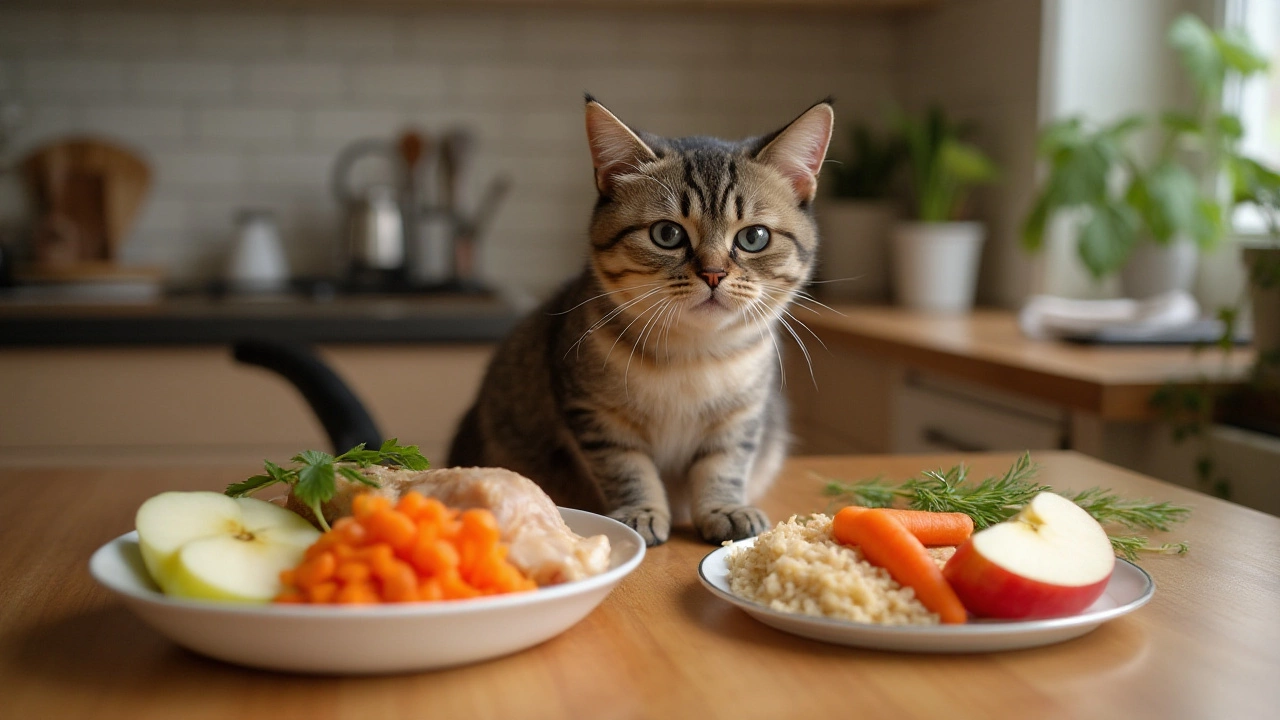Cat Food Alternatives: Simple Swaps for a Happier Cat
Ever stand in the aisle wondering if that dry kibble is the best thing for your cat? You’re not alone. Many owners start looking for alternatives because they want fresher ingredients, fewer fillers, or just a change of pace. The good news is you don’t have to overhaul everything. Small, thoughtful swaps can make a big difference in your cat’s health and mood.
Why consider alternatives?
Commercial cat food often contains grains, corn, or soy that some cats can’t digest well. Those ingredients can lead to weight gain, tummy upset, or skin issues. Switching to a better option helps you control what’s in the bowl. It also lets you add fresh protein, which is what felines evolved to eat. Most importantly, a balanced alternative keeps the essential nutrients like taurine, arginine, and vitamin A that cats need to thrive.
Simple homemade cat meals
You don’t need a chef’s hat to make a cat‑friendly plate. Start with one part cooked chicken—or turkey—without skin or bones. Add a spoonful of pumpkin for fiber, a dash of salmon oil for omega‑3s, and a pinch of ground egg yolk for extra protein. Mix it together and serve at room temperature. This combo gives protein, healthy fat, and a bit of carbohydrate without any mystery fillers.
If you’re short on time, try a can of pure fish in water (no oil or seasoning). Pair it with a boiled egg and a few peas. The peas add a bit of plant fiber, but keep the portion tiny—cats are obligate carnivores, so meat should still be the star.
For grain‑free kibble lovers, look for brands that list a single animal protein source first and avoid corn, wheat, or soy. Check the label for added taurine; without it, a cat can develop heart problems. Many newer formulas also include added probiotics, which help with digestion.
When you change a cat’s diet, do it gradually. Mix a little of the new food with the old, and increase the new portion over a week. This reduces stomach upset and lets you watch how your cat reacts. If you see any vomiting, diarrhea, or loss of appetite, pause the change and consult a vet.
Remember, treats are part of the equation. Swap store‑bought treats for small pieces of cooked fish or freeze‑dried chicken strips. They’re higher in protein and lower in sugar, keeping your cat’s weight in check.
Finally, keep fresh water available at all times. Some cats prefer running water, so a simple pet fountain can encourage them to drink more. Proper hydration supports kidney health, especially when you feed more dry food.
Trying cat food alternatives doesn’t have to be stressful. Pick one new protein source, add a safe veggie, and watch your cat enjoy the variety. Over time, you’ll see a shinier coat, more energy, and fewer vet visits. Your cat will thank you with happy purrs and playful antics.
- Morgan Ainsworth
- 0 Comments
Healthy Alternatives to Conventional Cat Food
Cats, with their unique dietary needs, require a sensitive approach when considering alternatives to traditional cat food. This article dives into exploring safe and nutritious human foods that can complement or replace regular cat food without compromising your feline's health. By emphasizing fresh proteins, grains, vegetables, and fruits, we offer guidance on establishing a balanced home menu for your pet. With useful tips and insights, discover how to enrich your cat's diet while ensuring its overall well-being.
View More
